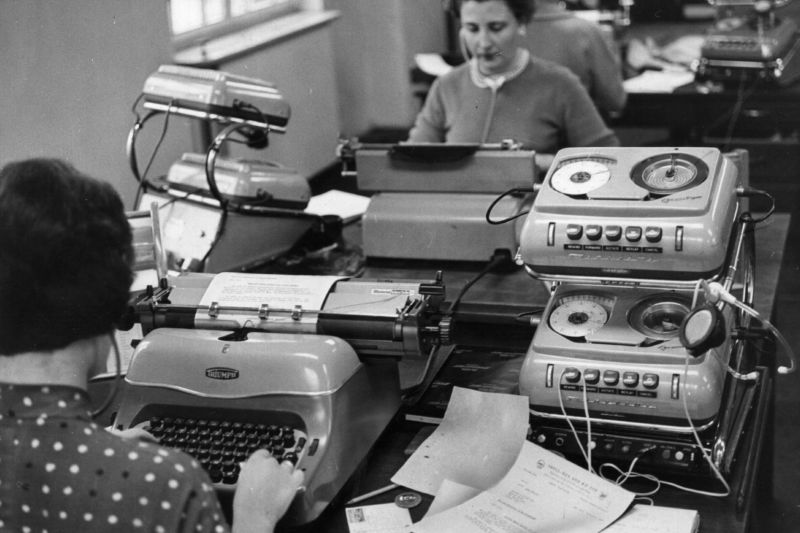
Enlarge / Secretaries use typewriters, before the word processor changed everything.
Computing pioneer Evelyn Berezin died at 93 this week. She was most known as the designer of the first true word-processing computer. But she designed many other innovative computing systems and helmed Redactron Corporation, a company that helped transform offices by producing and distributing her word-processor device.
FURTHER READING
The evolution of computer displays
Born to Jewish immigrants from Russia in New York City in 1925, Berezin earned a BA in physics at NYU before working throughout the 1950s and 1960s designing early computing systems. She had become interested in physics after reading her brother’s science-fiction periodicals.
In the earlier years of her career, she worked amidst a wave of innovation and new possibilities that came with the arrival of transistors. Among her early accomplishments was an airline reservations system for United Airlines, which «served 60 cities throughout the United States with a one-second response time and with no central system failures in 11 years of operation, » according to the Computer History Museum.
While IBM had been producing word processors of a sort for a few years when Berezin developed hers in 1968, she was the first to use semiconductor chips to make a true computing system for this purpose. IBM’s solution used a typewriter and a magnetic tape drive and was much less efficient to use.
The first version of her word-processing machine had no screen and was the size of a modern washer or dryer, though later iterations brought displays and other improvements to the design. And of course, it was wholly unlike the software-based solutions for personal computers that we use today. The New York Times described the invention in its obituary for Berezin this way:
Its keyboard and printer was an I.B.M. Selectric Typewriter with a rattling print head the size of a golf ball. The device had 13 semiconductor chips, some of which Ms. Berezin designed, and programmable logic to drive its word-processing functions.
The device was marketed directly to women who were working as secretaries with an ad in the publication Ms., which was co-founded by Gloria Steinem. The ad claimed "the death of the dead-end secretary.” At first, the machine made secretaries’ lives much easier, though it ultimately contributed to the reduced prominence of the profession in the workplace. Here is a segment of the ad copy, as quoted by The Washington Post:
Unlike your complacent sisters of the previous generation, you want the freedom to get into more interesting and challenging work—work that’ll give you the chance to move into a staff, administrative or managerial position—where you can call some of the shots… With the development of automatic editing typewriters and word processing systems, the conditions of dead-end typing have been practically eliminated.
FURTHER READING
The complete history of the IBM PC, part one: The deal of the century
When Intel failed to meet Redactron’s needs for suitable silicon for the machine, Berezin’s company designed and produced its own. Redactron sold about 10,000 of these machines over the course of seven years. They sold for between $6,400 and $8,000 each—an even more enormous sum at that time than it is today. Redactron competed directly with IBM and was ultimately acquired by the Burroughs Corporation. Berezin spent the later years of her career as a venture capitalist.
She was inducted into the Long Island Technology Hall of Fame in 2006 and the Women in Technology Hall of Fame in Los Angeles in 2011, but she does not have the household name recognition that some other similarly productive figures in the history of computing have had.
Berezin died in New York City on December 8. She had been diagnosed with lymphoma and chose not to pursue treatment.
